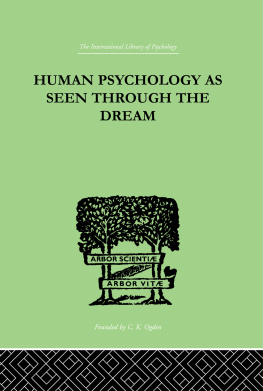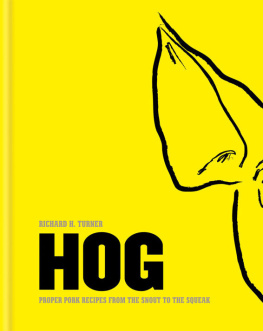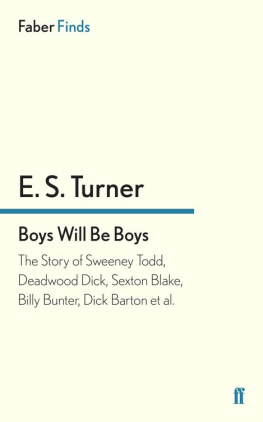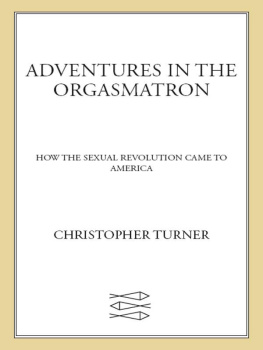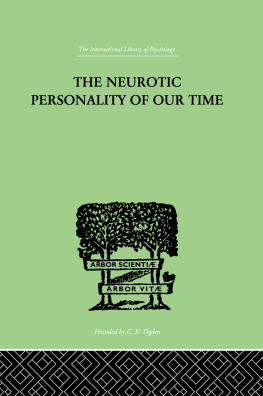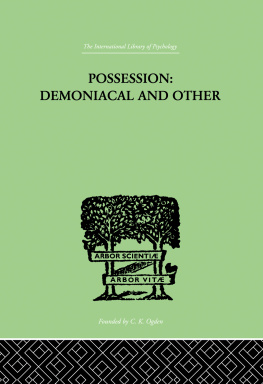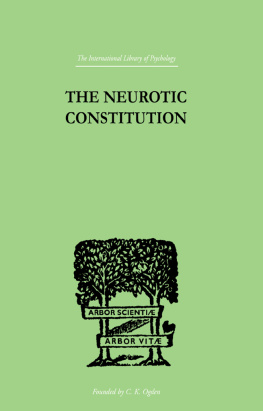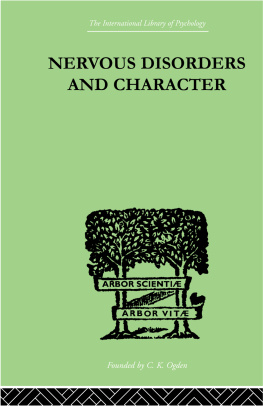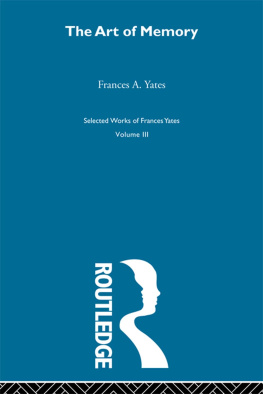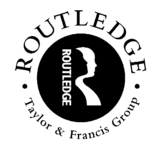The International Library of Psychology
HUMAN PSYCHOLOGY AS SEEN THROUGH THE DREAM
The International Library of Psychology
General Psychology
In 38 Volumes
Human Psychology as Seen Through the Dream
Julia Turner
First published in 1924 by
Kegan Paul, Trench, Trubner & Co., Ltd.
Reprinted 1999, 2000 by
Routledge
2 Park Square, Milton Park, Abingdon, Oxon, OX14 4RN
Transferred to Digital Printing 2006
Routledge is an imprint of the Taylor & Francis Group
1924 Julia Turner
All rights reserved. No part of this book may be reprinted or reproduced or utilized in any form or by any electronic, mechanical, or other means, now known or hereafter invented, including photocopying and recording, or in any information storage or retrieval system, without permission in writing from the publishers.
The publishers have made every effort to contact authors/copyright holders of the works reprinted in the International Library of Psychology. This has not been possible in every case, however, and we would welcome correspondence from those individuals/companies we have been unable to trace.
These reprints are taken from original copies of each book. In many cases the condition of these originals is not perfect. The publisher has gone to great lengths to ensure the quality of these reprints, but wishes to point out that certain characteristics of the original copies will, of necessity, be apparent in reprints thereof.
British Library Cataloguing in Publication Data
A CIP catalogue record for this book is available from the British Library
Human Psychology as Seen Through the Dream
ISBN 978-0415-21046-1
General Psychology: 38 Volumes
ISBN 0415-21129-8
The International Library of Psychology: 204 Volumes
ISBN 0415-19132-7
Printed and bound by CPI Antony Rowe, Eastbourne
Truth is within ourselves; it takes no rise
From outward things, whate'er you may believe.
There is an inmost centre in us all,
Where truth abides in fulness; and around,
Wall upon wall, the gross flesh hems it in,
This perfect clear perceptionwhich is truth.
A baffling and perverting carnal mesh
Blinds it, and makes all error: and to KNOW
Rather consists in opening out a way
Whence the imprisoned splendour may escape,
Than in effecting entry for a light
Supposed to be without.
..............
See this soul of ours!
How it strives weakly in the child, is loosed
In manhood, clogged by sickness, back compelled
By age and waste, set free at last by death:
Why is it, flesh enthralls it or enthrones?
What is this flesh we have to penetrate?
...............
One man shall crawl
Through life surrounded with all stirring things,
Unmoved; and he goes mad: and from the wreck
Of what he was, by his wild talk alone,
You first collect how great a spirit he hid.
Therefore, set free the soul alike in all,
Discovering the true laws by which the flesh
Accloys the spirit!
Paracelsus , Bk.
I. ROBERT BROWNING.
Preface
The present book is an attempt to supplement the slight sketch of the Anxiety Hypothesis put forward in The Psychology of Self-Consciousness, The former book aimed at explaining the difference between the perceptual and conceptual aspects of life, and at showing, by reference to general literature, the anxiety elements in human thought. In the present book in is traced out the sinouus course of the dream life conceived as a dramatic cycle.
The value of introspection on the Anxiety Hypothesis is frankly advocated, not only in particular as a therapeutic method, but also as an educational method of high value. Every reflecting being must introspect; there is a methodical introspection which is valuable, whereas unmethodical introspection is difficult and sometimes injurious.
Thanks are due to Messrs. Burns, Oates and Washbourne; Longmans, Green and Co.; Macmillan and Co.; Methuen and Co.; John Watkins; T. Fisher Unwin; for permission to use material quoted from books published by them.
An Answer to some Criticisms of the Anxiety Hypothesis.
I gather that I have failed, to make entirely clear my position in regard to two points which affect dream interpretation. Both affect the exact nature of the ultimate conflict in the subliminal sphere.
I. The conflict in the unconscious is not, on the Anxiety Hypothesis, between the perceptual and the conceptual. It is, on the contrary, wholly conceptual. It is the titanic struggle from which all anxiety experience for the rest of existence derives both its terrors and its sublimity. In the ultimate conflict the perceptual is always only symbol. But in the pseudounconscious there must be frequent conflicts between the conceptual and perceptual interests. This phase, like that of the phantasy life with which it is commonly associated, may lead to a veritable forty years of wandering in the wilderness. There is plenty of material forthcoming reflecting the struggle in which the perceptual, as such, tempts the unwary conceptual subject (a) from myth, the stories of Pan, the Satyrs, Centaurs, imprisonment in trees; (b) from dreams, uncouth monsters, and dreams in which the clothing of the upper part of the body (coat or bodice) is not in keeping with that of the lower part of the body (trousers or skirt); (c) from child psychology , the child's representations of animals and man, the latter particularly, with very little body part. This conflict is a problem of projection; it affects the educationist very particularly. Difficulties in negotiating this phase are among the evil effects of the child's language insufficiency and of the limitations of sympathy and even of knowledge in the human race in its functions as guardians of its youth. It explains the application of the word dirty to satisfaction of the instincts, an attitude to the matter which the dream mind supports in referring to displaced energy.
2. Not less is it incorrect, in my opinion, to say that the conflict of the dream is between the ego-impulse and sexuality. The very use of these terms shows that the critic is still thinking of the conceptual faculties of the human mind rather as a sublimation of instinct than as a new creation, as the Anxiety Hypothesis conceives it. To call the instinct of self-preservation the ego-impulse does not alter the fact that what is under discussion is instinct. Both the instinct of race-preservation (sexuality) and the instinct of self-preservation (ego-impulse) lend themselves as symbolism and both work both ways. Some forms of sexual pre-occupation are the symbol of death unto life, some of death unto death. Some substances eaten (knowledge and experience " taken in") are nutritious; some deleterious; some even poisonous. All physiological function symbolises psychic function and it may subserve either selfishness or self-surrender. This is the heart of the symbolism, involving a choice which is the central fact. Even when expressed as a love romance the concern of the nuclear conflict of the dream is the surrender of life to Him Who gave it.
The deepest concern of the inner life, as known to us through the dream, seems to be the training of the will to re-enact with open vision, in relation to an unseen Source of Life, the infant's original surrender to the mother after the agitation of the initial sparking situation or situations. This concern is ultimately one belonging to the conceptual sphere.

